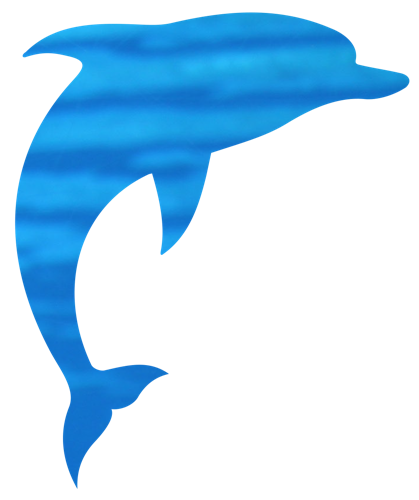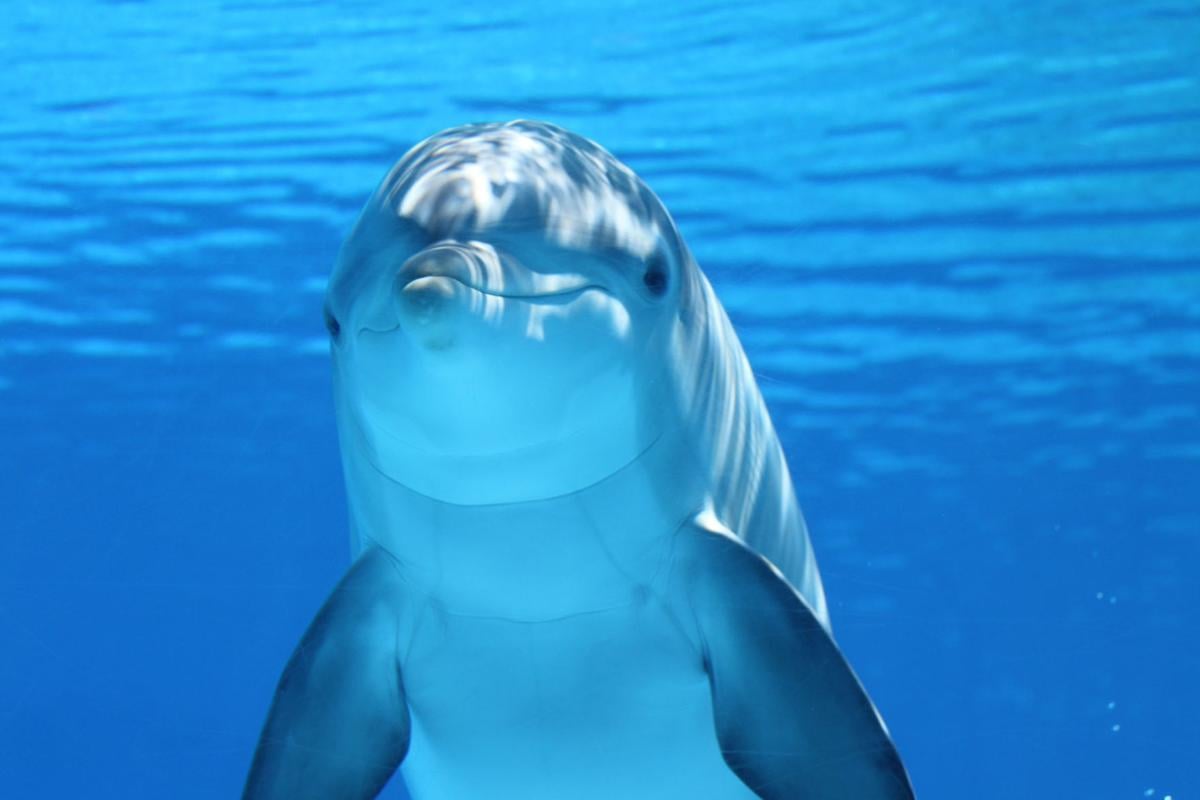Dolphins, I see dolphins!” says one of the small group of birders trudging down the beach. No matter what you are doing on the islands, the sight of the sleek gray dorsal fin come sliding out of the water will excite you.
What is about dolphins that fascinate us? Maybe, it is the fact that these creatures are air-breathing mammals, and they live in the rivers, creeks, and the ocean right here in the Golden Isles. They appear to enjoy riding the waves of boats. When you see them surfing the wakes, they seem to smile.

The Atlantic Bottlenose Dolphin is the most common dolphin in the ocean. They can be found from Nova Scotia to Patagonia in the west waters and from Norway to the tip of South Africa in the eastern Atlantic. This species live in our tidal marshes. They grow to about eight to eight-and-a-half feet long. Their flippers help them maneuver in tight places.
In fact, the dolphins in our area do something that they learn because of our marshes. The Georgia coast has some of the highest tides south of Massachusetts. When it is low tide, there are extensive mud banks near swallow creeks. Since dolphins are social animals and they swim in groups call pods, they help each other find and eat their favorite food: fish, shrimp, eel, and squid. In Georgia and South Carolina, dolphins have a unique way of catching fish called strand feeding.
The pod herds fish into tight schools and then up onto the mud banks. The dolphins follow them up onto the banks and eat the stranded fish. I remember the first time I saw it happen.
I had pulled off the Jekyll causeway to see if I could find some marsh birds. A pod of dolphins was swimming up the creek, then suddenly out of the blue; the dolphins turn to the mud bank. Before I knew it, three dolphins were out of the water in the mud. I gasped, “What is the world?” Just as quickly as they were out in the mud, they were back in the river.
Strand feeding is a predictable way of fishing here in Georgia. A few years back, National Geographic sent a camera crew out to a small marsh island near Jekyll Island to film this behavior.
Dolphins find other easy ways to find their food.
After all, these creatures are smart and they learn. In our area, they watch for people who are seine netting for shrimp at places such as St. Andrews Picnic area on Jekyll Island. Here is the way it works. One person stands on land and holds a pole with a net that stretches out to a person holding the other pole out in the river or ocean. These two people walk parallel to shore, pulling the net between them. This net catches the shrimp and small fish.
At St. Andrews Picnic area, seiners need a third person and sometimes a fourth person to shoo the dolphins away. The marine mammals love to steal the shrimp from the nets. Some dolphins beg from the anglers because it gets them a fish or two. But anglers and seiners beware; it is illegal to feed dolphins under the Marine Mammal Protection Act. If you are caught feeding them, there could be a fine up to $100,000.
Dolphins are amazing animals. They are identified by that dorsal fin, which are unique like fingerprints.
The sea creatures are social and have been known to help other animals who are in trouble.
Like birds, dolphins shut down half their brains to sleep, yet are still able to swim up and breathe air.
To learn more about the extraordinary animals, take one of the many excellent dolphin tours in the Golden Isles. You might just see a pod pushing fish up on the mud bank.




